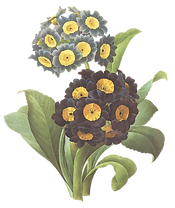Oh Kale Yeah
- Cynthia Thomas
- Aug 22, 2018
- 3 min read

Until you’ve eaten Kale fresh from your garden, you may be wondering what all the fuss about this green roughage is. Kale salad, chips, sautés and smoothies appear on menus everywhere. (Well, maybe not McDonalds).
This is one superfood that’s easy to grow and now is the time to plant it.
Even if you are just looking to replace your fading flowers in a container, the beautiful dark green and purple veins of this member of the cabbage family is an excellent choice. According to Web MD, Kale is more popular than ever, and it’s packed with vitamins and minerals. At just 33 calories, one cup of raw kale has:
Nearly 3 grams of protein
2.5 grams of fiber (which helps manage blood sugar and makes you feel full)
Vitamins A, C, and K
Folate, a B vitamin that’s key for brain development
Alpha-linolenic acid, an omega-3 fatty acid. (While kale has far less omega-3 than fish, it is another way to get some of this healthy fat into your diet.
Lutein and zeaxanthin, nutrients that give kale its deep, dark green coloring and protect against macular degeneration and cataracts
Minerals including phosphorus, potassium, calcium, and zinc **
And this dark, leafy green isn’t just the latest fad, it’s been on dinner plates since Roman times and has long been served across much of Europe. Brassica oleracea, or leafy cabbage as it’s known, is in the Brassica or cole crop family, which also includes broccoli, cauliflower, and collards. These veggies prefer cool weather over hot and that is why you can put your seeds in the ground now for a “winter” crop. Once mature, it will actually be sweetened by a touch of frost. Don’t wait too much longer to plant though, the hours of sunlight are dwindling and the plants need to mature before winter sets in.
Your toughest choice may be which type of kale to plant. There are curly, flat, and even purple and bluish tint varieties. Or you could get a mixed seed pack, like I found in this beautiful package from the Hudson Valley Seed Company - a small, farm-based seed company celebrating heirloom and open-pollinated garden seeds that offers unique varieties at wonderfully discounted prices.
Kale is much easier to grow than cabbage because it can be grown as a cut and come again vegetable, so a few plants may be all you need. Kale is a biennial (a plant that lasts for two growing seasons) that is usually grown as an annual. It will over-winter in most zones, with adequate protection. Most varieties get about 2 feet tall with a 1-to 3-foot spread.
Because kale is grown for its leaves, not flowers, it can handle full sun to partial shade. Direct sow seeds in soil that has high organic amendments. Cover seeds with about 1/2 inch of soil and don’t allow the seeds to dry out before germinating. Seeds will germinate quickly in warm soil and should be up within five to eight days. Kale matures quickly, in about two months or less. You can space out your planting over a few weeks - succession planting – to extend your harvest. If you don’t get around to it this August, you can plant in the spring, as soon as the soil can be worked and the soil temperature is at least 45 F.
Keep your kale plants well-watered. Mulching under the plants will help keep the soil cool and moist, the way kale likes it. Along with cool temperatures, moist soil will keep kale leaves sweet and crisp, rather than tough and bitter.
Here’s a link to more fun facts about Kale that includes a yummy Tuscan Bean and Kale Soup. Enjoy.
**Web MD does warn those who have Thyroid problems: In most cases, kale is a great addition to any diet. But kale and its cousins in the cabbage family can interact with thyroid function if they are eaten in very high amounts.

















